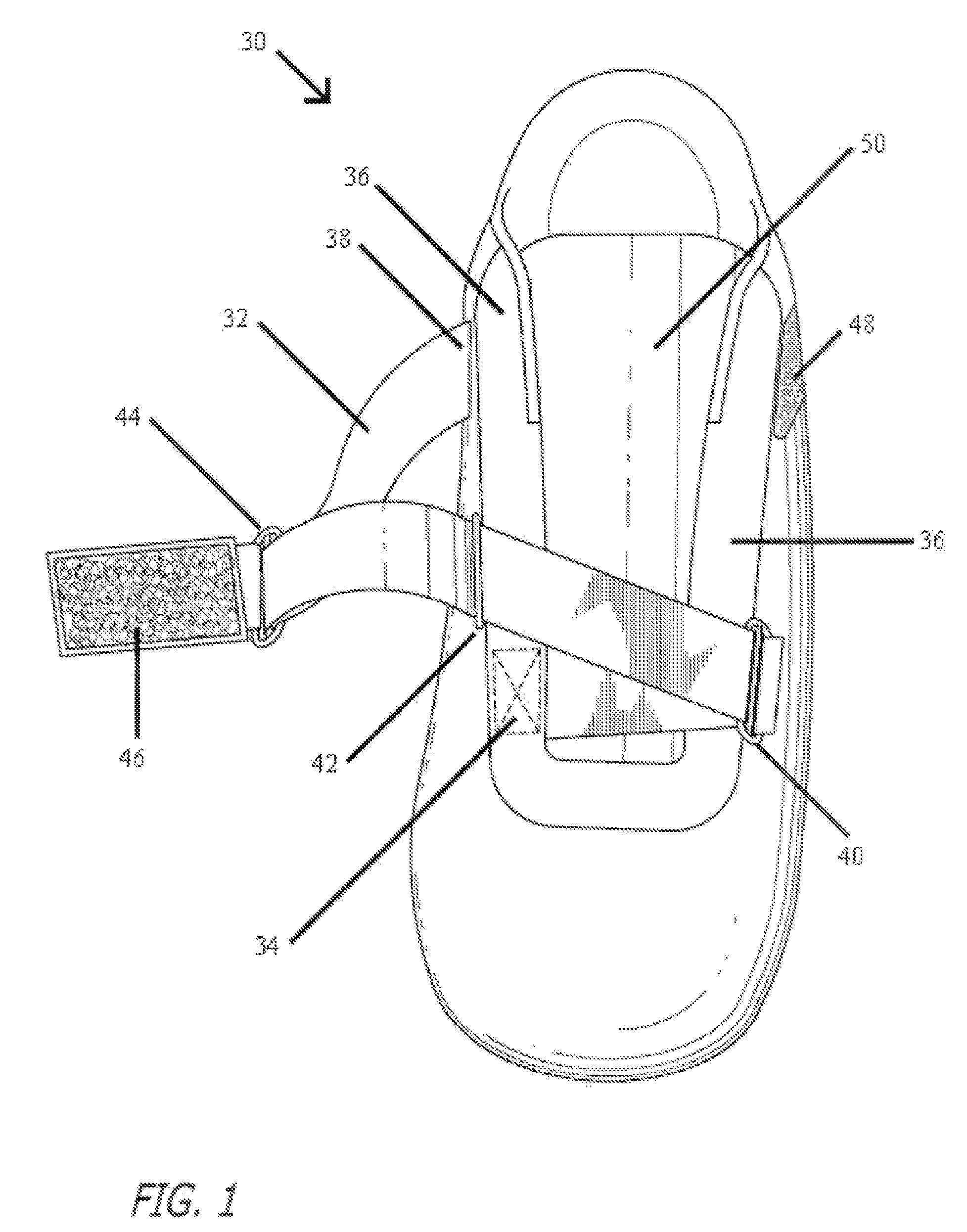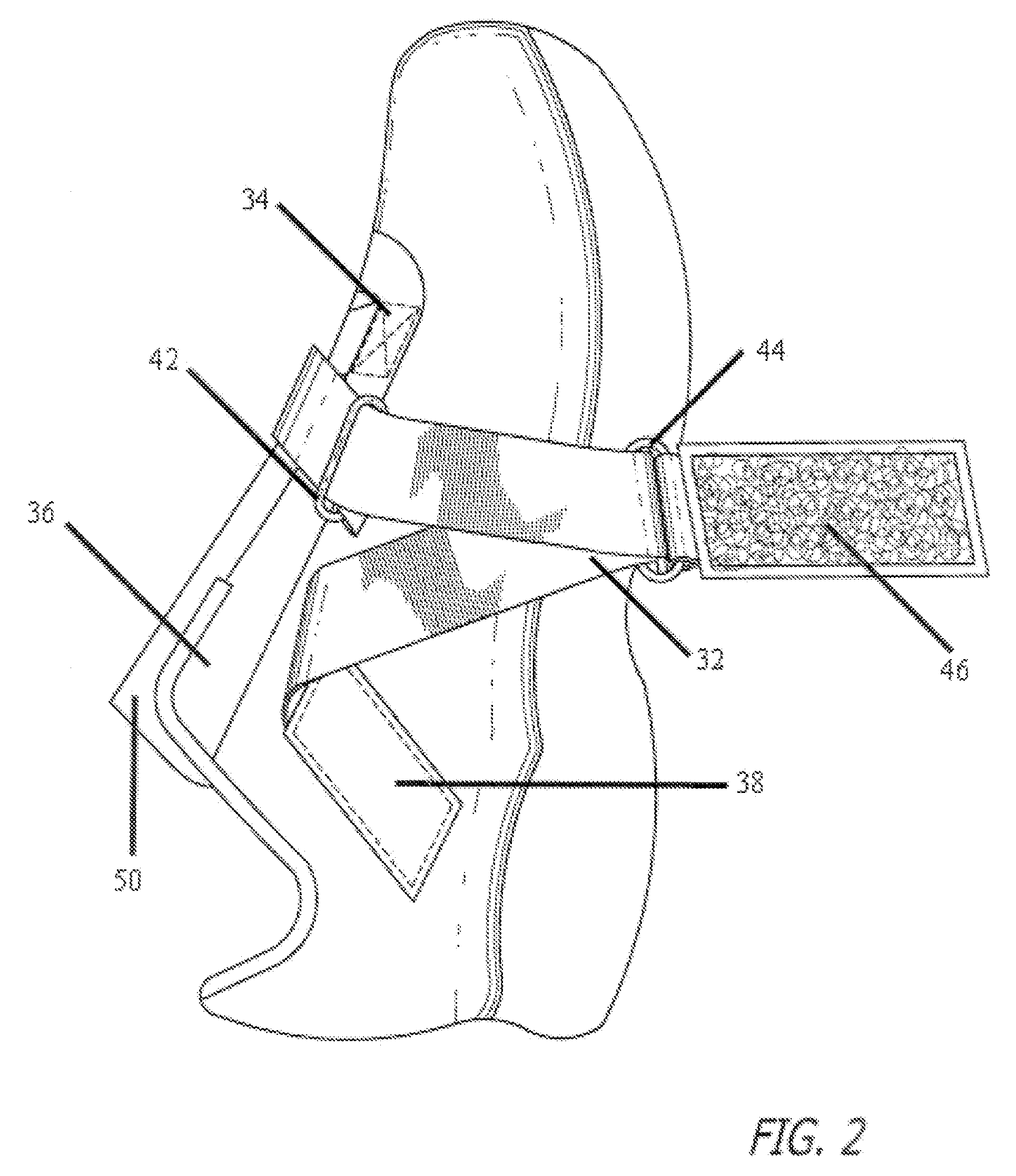Closure device for shoe
a shoe and closure device technology, applied in the field of shoe closure devices, can solve the problems of increasing time and effort, requiring an excessive amount of adjustment, and the shoe lace system has a tendency to unfasten itself, and achieve the effect of reducing time and effor
- Summary
- Abstract
- Description
- Claims
- Application Information
AI Technical Summary
Benefits of technology
Problems solved by technology
Method used
Image
Examples
Embodiment Construction
[0021]The invention will now be described with reference to FIG. 1, which illustrates a top view of the preferred embodiment of a shoe upper portion in accordance with the present invention. As shown in FIG. 1, a shoe upper 30 has a u-shaped member 36 and a tongue 50 spanning below the u-shaped member 36. In a conventional shoe the u-shaped member 36 would have an eyerow which would contain numerous openings for the passage of shoe laces. The present invention contains an interlaced strap 32 positioned to encompass the u-shaped member 30. The interlaced strap 32 is connected at the bottom of the u-shaped member 36 at the lower fixed point 34 found on the medial side of the shoe upper 30. The interlaced strap 32 crosses the u-shaped member 36 to the lateral d-ring 40 across the tongue 50, back across the tongue 50 to the medial d-ring 42, through the adjustable d-ring 44 and attaches to the shoe upper at the upper fixed point 38.
[0022]With further reference to FIG. 1, the adjustable ...
PUM
 Login to View More
Login to View More Abstract
Description
Claims
Application Information
 Login to View More
Login to View More - R&D
- Intellectual Property
- Life Sciences
- Materials
- Tech Scout
- Unparalleled Data Quality
- Higher Quality Content
- 60% Fewer Hallucinations
Browse by: Latest US Patents, China's latest patents, Technical Efficacy Thesaurus, Application Domain, Technology Topic, Popular Technical Reports.
© 2025 PatSnap. All rights reserved.Legal|Privacy policy|Modern Slavery Act Transparency Statement|Sitemap|About US| Contact US: help@patsnap.com



